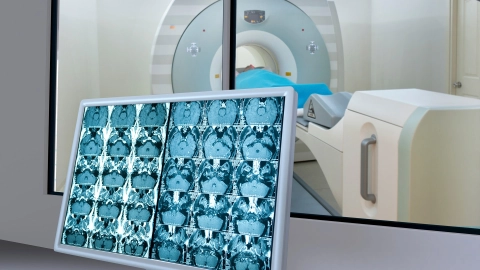ICD-Code C71.1: Malignant neoplasm: Frontal lobe
You have a malignant brain tumor. This is a cancer.
The tissue in the body is made up of cells. With cancer, the cells multiply uncontrollably, which leads to a malignant neoplasm (abnormal growth of tissue) developing. The cancer cells can destroy the healthy tissue and spread throughout the body.
The brain is made up of several parts. The cerebrum is the largest part of the brain. This is where thinking, feeling and planning of movements takes place. The cerebrum is made up of an outer layer called the cerebral cortex and an inner layer known as white matter. The cerebrum can be divided into several areas. In your case, a malignant brain tumor has developed in the front of your brain.
Not every cancer is the same. There are cancers that develop quickly. You may then quickly feel seriously ill. But there are also cancers that progress slowly. You may then feel generally unwell or weak, or even have no symptoms at all to start with.
The symptoms with a brain tumor will depend on the side of the brain and which area of the brain is affected. Your behavior towards other people, for example, may have changed. You may also have seizures. These seizures may only affect one part of the body. A seizure may also occur without cramp. Then you are passed out for a short time.
Please note: This ICD code may also derive from the ICD-O system. If this is the case, there are usually additional letters and numbers in addition to the code. It starts with the letter M, followed by 4 digits and then a slash. There is another digit after the slash.
If it is an ICD-O code, then this does not describe a malignant cancer in all cases. The last digit after the slash gives you more detailed information about this:
- /0 – The tumor is benign. Cells in a tissue multiply uncontrollably. However, they are not destroying the surrounding tissue and are also not spreading throughout the body.
- /1 – It is not known for sure whether the tumor is benign or malignant.
- /2 – It is an early form of cancer, a precancerous stage where the cells are altered and multiply uncontrollably. However, they are not yet spreading beyond a certain margin and cannot spread to other organs either.
- /3 – It is a malignant cancer. The cells in the affected tissue are altered and multiply uncontrollably. They can destroy the surrounding tissue and spread throughout the body.
- /6 – It is a metastasis. Cancer cells have spread from the originally affected site to a different site in the body and have further multiplied there.
- /9 – It is either a malignant cancer or a metastasis. The cells in the affected tissue are altered and multiply uncontrollably. However, it is impossible to say whether these cells derive originally from the affected site or have spread there from a different site in the body.
Additional indicator
On medical documents, the ICD code is often appended by letters that indicate the diagnostic certainty or the affected side of the body.
- G: Confirmed diagnosis
- V: Tentative diagnosis
- Z: Condition after
- A: Excluded diagnosis
- L: Left
- R: Right
- B: Both sides
Further information
Source
Provided by the non-profit organization “Was hab’ ich?” gemeinnützige GmbH on behalf of the Federal Ministry of Health (BMG).

